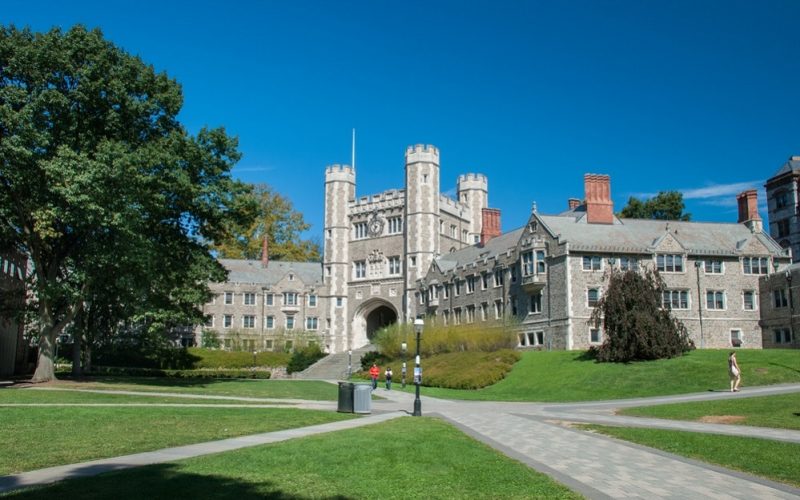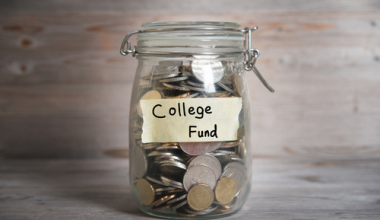Have you ever heard of the Ivy League schools? Maybe you’ve even dreamed of going to one? These universities are famous for being unique and super selective! But why are they called the ‘Ivy League’ anyway? How well do you understand the Ivy League colleges as a Canadian student?
The answer to this brainteaser goes way back in history. Some of history’s brightest minds have called Ivy League universities home for hundreds of years. The Ivies are a global educational force that is making a difference!
This article will go back in time into the surprising origin story of the Ivy League nickname, and how it came to be associated with these prestigious institutions. Afterwards, you should learn something new!
Table of contents
- What Makes a School Ivy League?
- Where are the Ivy League Schools Located?
- What are the Ivy League Schools?
- What Schools Are Mistaken for Ivy Leagues?
- Are Ivy League Schools Worth the Hype?
- Is It More Difficult to Get Into an Ivy League School?
- FAQs on why they are called Ivy League schools
- Conclusion
- References
What Makes a School Ivy League?
The schools are renowned for having exceptionally demanding admissions processes and have produced numerous well-known and prosperous alums. For instance, during the 1980s, every US president graduated from an Ivy League school.
The Ivy League schools are highly funded and provide high-quality resources and education, including small class numbers, access to new technology, a low student-to-teacher ratio, and recognized faculty, thanks to their strong alumni networks.
Ivy League institutions are among the oldest in the country and are entrenched in centuries of tradition. Eight Ivy League universities, with one exception, were founded before the American Revolution.
Some of the most prestigious, selective, and highly-ranked universities in the world are members of the Ivy League. Also, many can offer large financial aid packages while being notorious for having high tuition fees.
The oldest higher education facility in the US is Harvard University, founded in 1636. Yale surpassed Penn as the third-oldest institution in 1701 and was then followed by Princeton (1746), Columbia (1754), Brown (1764), and Dartmouth (1769). After nearly a century, Cornell was finally established in 1865.
The Ivy League colleges were all established at various times, yet they all joined simultaneously. The phrase “Ivy” probably alluded to a custom at numerous regional institutions where students plant ivy at different campus structures.
The Ivy League officially joined the National College Athletic Association in 1954, 20 years later. The Ivy League would set itself apart from other conferences by not providing any athletic scholarships, as agreed upon by the eight universities.
Instead, students must demonstrate academic excellence to be admitted. This still holds today; however, they may recruit student-athletes, and many students get financial aid in some form.
Where are the Ivy League Schools Located?
The Northeastern United States is home to all the Ivy League universities. All the colleges were established extremely early in US history (7 of the 8 institutions were established between 1636 and 1769).
Colonies were starting to establish themselves in the northeast around this period. Western expansion did not get underway until the 1800s.
Although there is no confirmed explanation for why these institutions joined the League in 1954, several people speculate that it may have something to do with their shared status, size, and geographic location.
Ivy League school locations, from north to south:
- Dartmouth College: Hanover, New Hampshire
- Harvard University: Cambridge, Massachusetts
- Cornell University: Ithaca, New York
- Brown University: Providence, Rhode Island
- Yale University: New Haven, Connecticut
- Columbia University: New York, New York
- Princeton University: Princeton, New Jersey
- University of Pennsylvania: Philadelphia, Pennsylvania
Read this: What Is the Danger of Taking a Variable Rate Loan as a College Student?
What are the Ivy League Schools?
The term “Ivy League” refers to eight elite and prestigious private universities in the northwest United States. The eight Ivy League schools include:
- Brown University
- Columbia University
- Cornell University
- Dartmouth College
- Harvard University
- University of Pennsylvania
- Princeton University
- Yale University
#1. Brown University
Brown can trace its beginnings to 1764 when the Rhode Island General Assembly granted the town its charter. In 1804 it was given the name Brown in honor of Nicholas Brown Jr., a merchant and co-founder of the College.
Brown is a significant research and academic institution renowned for its student-centered instruction. At Brown, students who successfully navigate their intellectual paths exhibit deep curiosity and aspire to change the world.
Only Brown, a top research university in the country, allows undergraduates to design a specialized course of study.
Their application procedure is contextual and all-encompassing. Because students can benefit from Brown’s renowned Open Curriculum and try out a variety of courses before deciding on an academic emphasis, self-directed applicants thrive in this setting.
#2. Columbia University
Columbia College was renamed Columbia University in 1784 after the American Revolutionary War. King’s College was founded as Columbia College by the royal charter of George II of Great Britain.
At Columbia University, the foundational classes for all undergraduates include literature, philosophy, physics, art, history, and music.
Each class has 22 students, allowing for tight faculty-student interaction. Popular STEM programs at Columbia include computer science and engineering.
Furthermore, most of Columbia University’s student body, which is passionate about political participation and actively participates in political engagements across the city, is close to Manhattan, New York.
Columbia, one of the most diverse Ivy League schools, is known as “the quintessential great urban university,” with students hailing from all 50 states and more than 100 other countries.
You can check this: What to Wear to a College in the USA: 2024 Dress Code Tips & Ideas
#3. Cornell University
A New York State Senate law establishing Cornell as the state’s land grant university was passed in 1865. Ezra Cornell, a senator, gave the institution’s location on his estate in Ithaca.
The goal of Cornell is to acquire, store, and disseminate knowledge. They achieve this by creating original and imaginative work and expanding their influence outside the university.
Cornell University may be the right choice if you are passionate about learning how to improve people’s lives in your community and around the world.
Cornell actively promotes outreach and public service in the greater New York region and elsewhere. Additionally, it has top-tier multidisciplinary research facilities in genomics, supercomputing, nanotechnology, and biotechnology.
#4. Dartmouth College
One of the most prestigious and established universities in the country is Dartmouth.
Eleazar Wheelock, a Connecticut-born Congregational pastor, founded the college in 1769 to educate Native Americans.
The teacher-scholars at Dartmouth are recognized experts in their disciplines and devoted educators. Senior academics teach even first-year students.
Also, professors at Dartmouth are among the best educators in American higher education. Students who want to take advantage of all the university’s educational options can benefit from its highly flexible quarter structure.
#5. Harvard University
The oldest university in the country is Harvard University. Established in 1636, it is named for one of the college’s original donors, a young priest named John Harvard. When he passed away in 1638, he donated his library and part of his wealth to the organization.
Harvard offers specialized teaching for both individuals motivated toward a passion and those still figuring out their route, thanks to access to world-renowned research opportunities, thought-provoking courses, and faculty mentors.
Furthermore, the House System at Harvard College connects learning and living and forms the basis of the undergraduate experience.
Each house features a dining hall, standard rooms, and spaces for academic, recreational, and cultural events. It can accommodate 350–500 people.
#6. University of Pennsylvania
One of the founding fathers of the United States, Benjamin Franklin, was eager to establish a school to teach future generations, thus he founded the University of Pennsylvania in 1740.
American history is heavily infused at the university. Students are encouraged to participate in extracurricular activities and learn about the city’s political, social, and cultural life and beyond.
In addition, award-winning academics instruct classes and inspire learners to follow their passions, tackle complex issues, and make a difference in the world.
Also, read this: Which are Better: Honors Vs AP Classes In High School? | Best Guides
7. Princeton University
Princeton is the fourth-oldest college in the US, founded in 1746. It moved to its current location in 1756 from its previous locations in Elizabeth and Newark and is situated in Princeton’s renowned Nassau Hall.
Princeton focuses on undergraduate education. It is proud of its robust financial aid program and ensures that all accepted students, regardless of economic situation, can attend and graduate with little to no debt.
Also, Princeton looks for talented people from various social, economic, and cultural backgrounds. Princeton expects students to conduct original, innovative research, and collaboration is encouraged.
8. Yale University
Although the college was established in 1701, it wasn’t given its current name until 1718, when merchant Elihu Yale gave it to the New Haven college along with 417 books, 562 pounds worth of cloth, and a painting of King George.
As a research university and liberal arts college, Yale only admits applicants it believes will make the most of its opportunities and have the biggest impact on the Yale community.
In addition, they seek out pupils willing to push themselves beyond their comfort zones.
What Schools Are Mistaken for Ivy Leagues?
Although “Ivy League school” may connote distinction and history, other prestigious institutions exist in the US. When they are genuinely unaffiliated, several schools are mistakenly thought to be Ivy League schools.
The Massachusetts Institute of Technology, the University of Chicago, John Hopkins University, Georgetown University, Stanford University, Duke University, and others are among the “Ivy Plus” schools under this category.
Furthermore, the “Little Ivies,” a group of colleges and universities noted for their rigorous academic standards and high admissions scrutiny, is another league of comparable stature.
These institutions, however, provide a liberal arts education and have a smaller student body. Amherst College, Bowdoin College, and Wesleyan University are a few examples.
Prestigious public universities known as “Public Ivies” provide a collegiate experience resembling that of Ivy League institutions.
They include, among others, the Universities of Virginia, Michigan, and California, Berkeley, and Los Angeles.
Also, these institutions frequently have 20,000–40,000 students and provide high-quality education at much-reduced costs.
Check this: What is the Difference Between Weighted and Unweighted GPA
Are Ivy League Schools Worth the Hype?
The rigorous academic standards of Ivy League universities are their main selling point. These institutions provide small class sizes with highly qualified instructors, some of whom have won Pulitzer and Nobel Prizes.
Ivy League academies often focus on teaching and giving their students greater one-on-one attention, unlike substantial public institutes where academics are subject to research and publishing constraints.
Furthermore, Ivy League schools frequently have the best facilities and resources in addition to a rigorous academic program because of their substantial endowments, which include gifts from successful graduates and other assets.
These endowments allow Ivy League universities to provide students from qualifying families with significant financial aid packages.
Famous and prosperous people like Michelle and Barack Obama, Warren Buffet, Noam Chomsky, Jeff Bezos, and other Nobel Laureates are Ivy League graduates.
As a result, students gain access to broad opportunities, internships, and professions through robust alumni networks. Putting networks aside, having an Ivy League education on a résumé occasionally gives an advantage in the job market.
Even though most Ivy League institutions provide generous financial aid packages to those who qualify, some students still have to pay the total cost of attendance. The annual cost of tuition, plus room and board, can exceed $80,000.
While there are apparent advantages to attending an Ivy League institution, the truth is that many other institutions offer top-notch education, frequently for far less money.
See this: Easy High School To College Transitions: 15 Best On The List
Is It More Difficult to Get Into an Ivy League School?
The acceptance rates of Ivy League universities are notoriously low despite the large number of applicants. The class of 2026 had a record-high total number of applications (375,00) and a record-low acceptance percentage (4.9% on average across the eight schools), both of which were true of the applications.
Some have hypothesized that COVID-19 may be to blame for the record number of candidates and record-low acceptance percentages for the class of 2026.
Many candidates who would have submitted applications as members of the class of 2024 may have postponed their applications until one or two years later when they would be allowed to enroll in college programs as usual.
All Ivy League colleges are challenging, but some are marginally more challenging than others. With 3.29% of applications accepted, Harvard University has the lowest acceptance rate for the class of 2026.
Following this were Dartmouth College (6.24%), Yale University (4.46%), Brown University (5%), Columbia University (3.73%), and Yale University (4.46%).
Like in previous years, many Ivy League schools did not announce admission rates this year.
To alleviate some of the concerns that low acceptance rates give prospective students and their families, which may deter some from applying, Princeton, for instance, opted not to announce acceptance rates.
In addition, the University of Pennsylvania and Cornell University withheld their acceptance rates for the class of 2026.
Some non-Ivy League colleges are equally as challenging to get into as Ivy League schools, if not more so.
The Massachusetts Institute of Technology only accepted 3.9% of the applicants for the class of 2026. Stanford, Princeton, Cornell, and the University of Pennsylvania did not disclose their admission rates for the class of 2026, but it was 3.95% for the class of 2025.
FAQs on why they are called Ivy League schools
The original 8 institutions that established the Ivy League in 1954 are still members today. Because of their prominence and respect, they are unlikely to let additional schools into the League.
Theoretically, other schools could join and play against these eight because the Ivy League is an athletic conference. However, it is up to the League to decide whether that will happen.
Sports writer Caswell Adams first used the phrase “Ivy League” in a 1937 story in the New York Herald. Adams coined the word to refer to the dominant Eastern football league that was put together by eight universities: Harvard, Princeton, Yale, Penn, Dartmouth, Cornell, Columbia, and Brown.
Cornell
Cornell has the highest Ivy League admission percentage, making it the “easiest” Ivy League to enter. Statistically speaking, getting into Cornell is more straightforward, but it’s still tricky. Remembering that students must submit a direct application to one of Cornell’s eight undergraduate colleges is crucial.
No, it is not one of the eight prominent American institutions known as the Ivy League, which includes Harvard, Yale, and Princeton.
Conclusion
Although it sounds significant, what does “Ivy League” actually mean? What qualifies a school as Ivy League? What led to the differentiation being made? Are Ivy League institutions superior to others?
We have examined what it means to be in an Ivy League institution and the perks and drawbacks of enrolling there.
References
- Crimsoneducation.org – Why are they called Ivy League schools
- Medschoolinsiders.com – Why are they called Ivy League schools
Recommendations
- Is Duke an Ivy League School? All You Need To Know in 2024
- Franklin Towne Charter High School: What to know before Applying in 2024
- Drew Charter School: What to know before Applying in 2024
- What is it like to attend Hunter College High School? Best Advice
- Do Grades Matter in My Success in Life? Data Proven Answers



